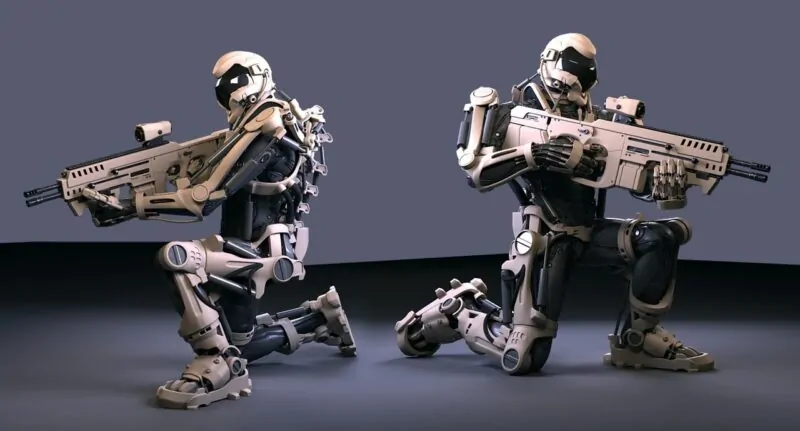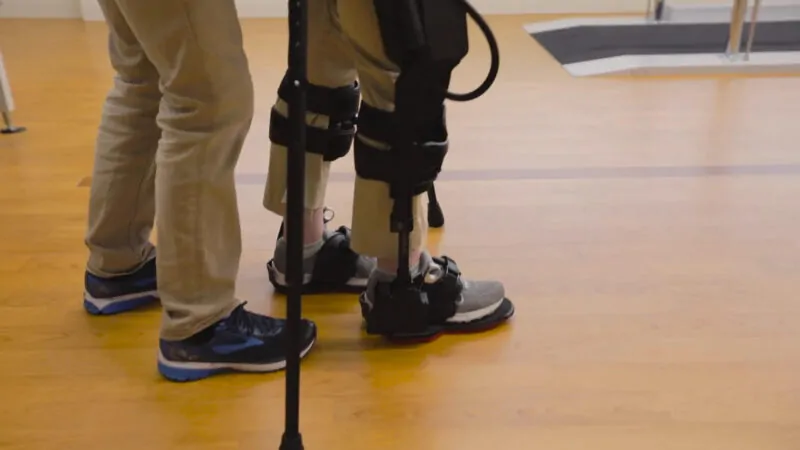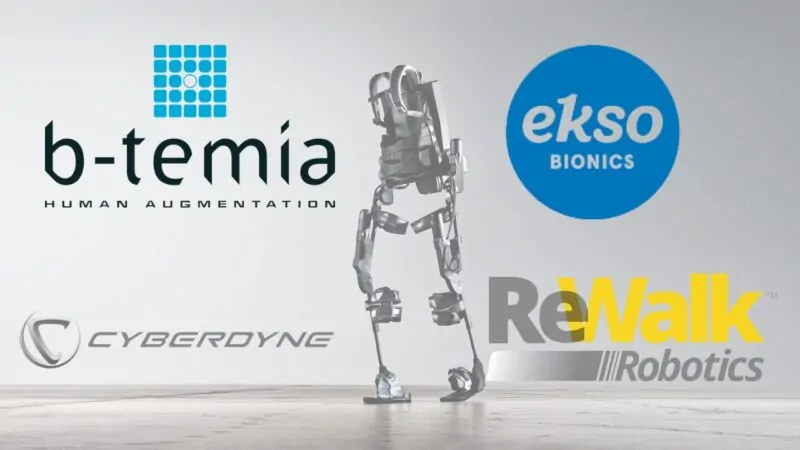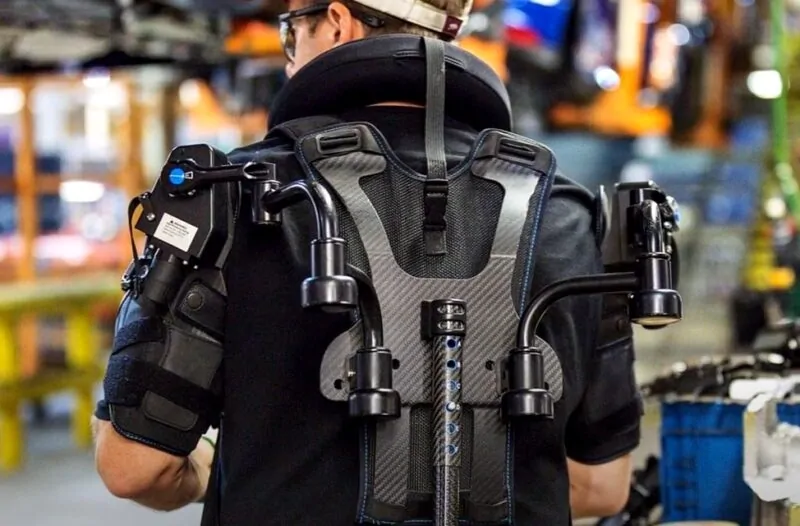Exoskeletons might sound like something out of a sci-fi movie, but they’re becoming a real part of our world, from helping people walk again to making tough jobs easier. You might have seen them in the news or even in action without realizing just how much they can do.
In this article, we’re going to break down what exoskeletons actually are and how they work.
Table of Contents
ToggleWhat Are Exoskeletons?
Exoskeletons are wearable devices designed to enhance human capabilities, such as strength, endurance, and mobility. They are being increasingly adopted across various sectors, including healthcare, industry, and the military.
Types of Exoskeletons
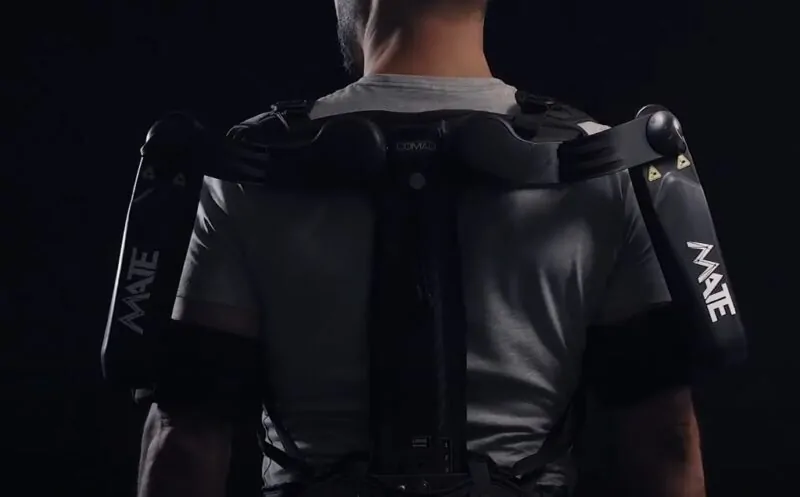
- Powered Exoskeletons: These devices use motors and sensors to assist the user’s movements, making them ideal for tasks that require significant physical effort. In 2023, powered exoskeletons dominated the market, with the segment expected to continue growing due to advancements in technology and increasing demand across multiple industries.
- Passive Exoskeletons: These devices rely on mechanical structures without motors to provide support. They are generally lighter and are used in settings where less intensive assistance is required.
Applications Across Sectors
- Healthcare: The healthcare sector is a significant driver of the exoskeleton market, with devices being used for rehabilitation, particularly for individuals with spinal cord injuries (SCIs) and other mobility impairments. In 2023, the healthcare segment accounted for the largest market share, driven by the increasing incidence of SCIs and the adoption of exoskeletons in rehabilitation centers.
- Industry: Exoskeletons are being increasingly used in industrial settings to improve worker productivity and reduce the risk of injury. These devices are particularly useful in industries such as construction, manufacturing, and logistics, where they help workers perform physically demanding tasks more safely and efficiently.
- Military: Exoskeletons are also being adopted by the military to enhance soldier endurance and mobility, particularly in carrying heavy loads. This segment is expected to grow as militaries around the world continue to invest in advanced technologies to improve soldier performance.
Market Insights
- Global Market Size: The global exoskeleton market was valued at approximately USD 419.5 million in 2023 and is projected to grow at a compound annual growth rate (CAGR) of 16.6% from 2024 to 2030. This growth is driven by factors such as the rapidly growing global geriatric population, increasing adoption rates of medical devices across various industries, and the rising incidence of strokes and other conditions that require rehabilitation.
- North America: This region dominated the exoskeleton market in 2023, with a revenue share of 45.9%, largely due to high investments in research and development, the presence of key market players, and early adoption of advanced technologies. Asia-Pacific is expected to witness the fastest growth during the forecast period, driven by increasing demand for rehabilitation support and advancements in healthcare infrastructure.
Leading Companies
- Key players in the exoskeleton market include Ekso Bionics, Cyberdyne Inc., ReWalk Robotics, and B-Temia. These companies are leading the way in developing and commercializing exoskeleton technologies across various applications.
How Exoskeletons Actually Work?
Exoskeletons are wearable robotic devices designed to enhance or restore human movement, particularly for those with mobility impairments. They operate by providing external mechanical assistance to the body, allowing users to perform tasks they might otherwise struggle with or be unable to do at all.
Components and Mechanisms
- Actuation Systems: Exoskeletons use a variety of actuation systems to function. The most common types include electric, hydraulic, and pneumatic systems. Electric actuation dominates the market due to its efficiency and portability, with a growth rate of 42.8% expected during the forecast period. These systems involve motors and sensors that work together to detect user movement and provide the necessary support.
- Sensors and Control Systems: Exoskeletons are equipped with advanced sensors that monitor the user’s movements. These sensors send data to a control system that adjusts the device’s motors in real time, ensuring that the assistance provided is smooth and natural. This technology is crucial in healthcare applications, where precise movements are necessary for rehabilitation.
- Power Sources: Most exoskeletons are powered by rechargeable batteries, providing hours of operation before needing to be recharged. The development of more efficient batteries is ongoing, with a focus on extending battery life and reducing the overall weight of the exoskeleton.
Healthcare Applications
- Rehabilitation: Exoskeletons are widely used in rehabilitation, particularly for patients recovering from spinal cord injuries, strokes, and other neurological conditions. These devices help patients regain mobility by assisting with repetitive movements during physical therapy sessions. The U.S. Medicare system recently included exoskeletons in its coverage, recognizing their potential to improve the quality of life for individuals with severe mobility issues.
- Daily Assistance: Beyond rehabilitation, exoskeletons are also used to assist individuals with chronic conditions in their daily activities. Devices like the ReWalk exoskeleton allow users to stand, walk, and even climb stairs, significantly improving their independence and reducing the physical burden on caregivers.
Challenges and Innovations
- Integration and Adaptation: While exoskeleton technology has advanced significantly, there are still challenges in integrating these devices seamlessly into users’ lives. Innovations such as lightweight materials and improved control systems are ongoing, aiming to make exoskeletons more user-friendly and adaptable to various needs.
Exoskeletons in Tough Jobs and Industries
Exoskeletons are becoming increasingly popular in various industrial settings, where they help reduce the physical strain on workers and enhance productivity. These wearable devices are particularly valuable in jobs that involve heavy lifting, repetitive movements, and prolonged physical activity.
Applications in Industry
- Manufacturing: In manufacturing environments, exoskeletons are used to assist workers with tasks that require repetitive motions or lifting heavy objects. The automotive industry, for instance, has been a major adopter, with companies like Toyota implementing exoskeletons as mandatory equipment for certain tasks since 2019. These devices help reduce worker fatigue and the risk of musculoskeletal injuries, which are common in such settings.
- Construction: The construction industry also benefits from exoskeletons, particularly in tasks that involve lifting, carrying, and working in awkward positions for extended periods. Passive exoskeletons, which use springs or other mechanical systems to assist movement, are popular in this sector because they are lighter and more affordable compared to powered exoskeletons.
- Warehousing and Logistics: In warehousing and logistics, exoskeletons help workers lift and move heavy items more efficiently. Devices like the German Bionic’s Cray X and Verve Motion’s SafeLift are designed to reduce the strain on workers’ backs and shoulders, allowing them to maintain productivity throughout long shifts.
Impact on Worker Health and Safety
Exoskeletons significantly reduce the physical toll on workers, leading to fewer injuries and lower absenteeism rates. This not only improves the well-being of employees but also enhances overall productivity. The use of exoskeletons can also open up physically demanding jobs to a broader range of workers, including those who might not have the physical strength to perform these tasks unaided.
Challenges
While the benefits of exoskeletons in industrial settings are clear, their adoption is still facing significant challenges, primarily due to cost. The price for full-body powered exoskeletons, which are typically used in heavy industrial applications, can range from $77,000 to over $100,000 depending on the model and its features. For example, the ReWalk exoskeleton is priced around $77,000, while other models like the Ekso are priced higher, especially when used in clinical settings.
How the Military Uses Exoskeletons?
Exoskeletons are transforming how soldiers perform physically demanding tasks, providing them with enhanced strength, endurance, and mobility. The U.S. military, along with other global defense forces, is increasingly integrating these wearable devices into various operations, from logistics to combat scenarios.
Applications in the Military
- Load-Bearing and Mobility Enhancement: Military exoskeletons are primarily used to help soldiers carry heavy equipment over long distances without fatigue. For example, the Raytheon XOS 2 exoskeleton allows soldiers to lift and carry loads up to 200 pounds with minimal effort, significantly reducing physical strain. This capability is particularly valuable in combat and logistics roles, where soldiers need to move heavy gear rapidly across challenging terrain.
- Injury Prevention and Performance Improvement: Exoskeletons also play a crucial role in reducing the incidence of musculoskeletal injuries, which are common in military personnel due to the physically demanding nature of their work. Passive exoskeletons, which do not rely on motors but instead provide mechanical support, are being increasingly used to reduce back strain and improve overall endurance during long missions.
- Research and Development: The military continues to invest in exoskeleton technology through partnerships with academic institutions and private companies. The U.S. Army, for instance, has collaborated with Vanderbilt University to develop suits specifically designed to support the lower back during heavy lifting tasks. These suits have shown promise in reducing injury rates and enhancing soldier readiness.
Advances in technology have also contributed to the durability and functionality of equipment designed for harsh environments, ensuring that military-grade innovations can withstand the rigorous conditions of modern operations.
Potential Issues with Exoskeletons
While exoskeletons offer significant benefits across various sectors, they also come with several challenges that need to be addressed for wider adoption and effectiveness.
1. High Costs
The cost of exoskeletons remains a significant barrier, particularly in sectors like healthcare and industry where budgets are often tight. For example, the prices of high-end exoskeletons can range from tens of thousands to even over $100,000, depending on the complexity and functionality. This makes it difficult for smaller companies or healthcare facilities to invest in such technology, limiting its accessibility and potential impact.
2. Battery Life and Power Supply
One of the most persistent issues with exoskeletons is their limited battery life. Powered exoskeletons, which rely on motors and actuators, require a reliable power source to operate effectively throughout the day. Current battery technologies often fall short, with devices needing frequent recharges, which can interrupt workflow and reduce productivity. The development of more efficient and longer-lasting power supplies is crucial to overcoming this challenge.
According to Hugh Herr from the Journal of NeuroEngineering and Rehabilitation, exoskeletons like BLEEX require around 1,143 Watts of hydraulic power during level-ground walking, highlighting the significant energy needs of these devices.
3. Usability and Comfort
Exoskeletons, particularly the more rigid and powered types, can be uncomfortable to wear for extended periods. Users often report discomfort due to the weight and the restrictive nature of some devices. Soft exosuits, which are lighter and more flexible, offer a potential solution, but they also sacrifice some of the power and efficiency of their rigid counterparts. Balancing comfort with functionality remains a key challenge in exoskeleton design.
4. Integration with Workflows
In both industrial and healthcare settings, integrating exoskeletons into existing workflows can be complex. Workers and healthcare providers may require extensive training to use these devices effectively. Additionally, exoskeletons must be carefully matched to specific tasks to ensure they provide the intended benefits without causing additional strain or operational disruptions.
FAQs
Last Words
The rise of exoskeleton technology is reshaping various industries, from healthcare to military operations and industrial settings. These wearable devices offer significant benefits by enhancing human strength, endurance, and mobility. However, they also face challenges such as high costs, limited battery life, and comfort issues.
As research and development continue, we can expect these technologies to become more accessible, efficient, and integrated into daily tasks. The future of exoskeletons looks promising.
Related Posts:
- VA Disability 5-Year Rule Explained - How It Affects…
- Can You Have Tattoos in the Military? Rules Explained
- What Are the Current Swing States in 2025, and How…
- UAS, Drones, and UAVs - How Do They Differ?
- The Hidden Rules of Military Life - What They Don’t…
- The COVID-19 Crisis and Its Impact on Military and…

